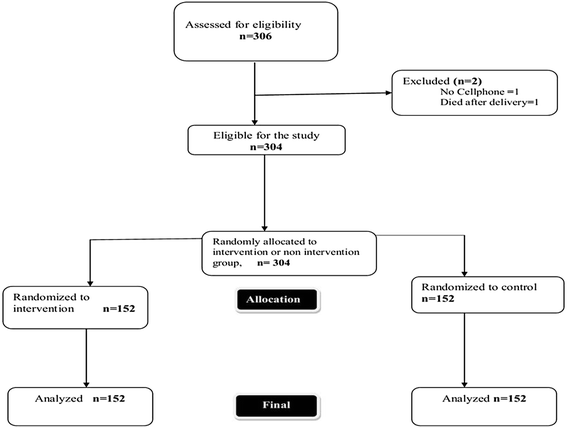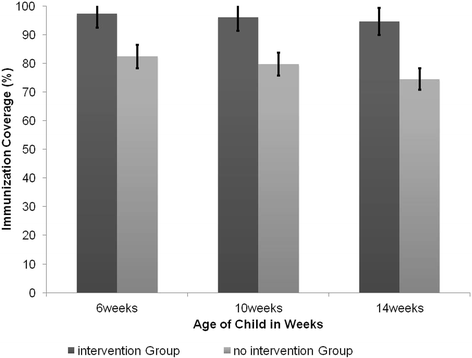Effectiveness of short message services reminder on childhood immunization programme in Kadoma, Zimbabwe - a randomized controlled trial, 2013
- PMID: 25885862
- PMCID: PMC4339642
- DOI: 10.1186/s12889-015-1470-6
Effectiveness of short message services reminder on childhood immunization programme in Kadoma, Zimbabwe - a randomized controlled trial, 2013
Abstract
Background: Globally, non-attendance for immunization appointments remains a challenge to healthcare providers. A review of the 2011 immunization coverage for Kadoma City, Zimbabwe was 74% for Oral Polio Vaccine (OPV), Pneumococcal and Pentavalent antigens. The immunization coverage was less than 90%, which is the target for Kadoma City. Adoption of short message services (SMS) reminders has been shown to enhance attendance in some medical settings. The study was conducted to determine the effectiveness of SMS reminders on immunization programme for Kadoma City.
Methods: A randomized controlled trial was conducted at Kadoma City clinics in Zimbabwe. Women who delivered and were residents of Kadoma City were recruited into the study. In the intervention group, SMS reminders were sent at 6, 10 and 14 weeks in addition to routine health education. In the non-intervention no SMS reminders were used, however routine health education was offered. Data were collected using interviewer administered questionnaire. Data were analyzed using Epi Info 7™, where frequencies, means, risk ratios and risk differences were generated.
Results: A total of 304 participants were recruited, 152 for the intervention group and 152 for the non-intervention group. The immunization coverage at 6 weeks was 97% in the intervention group and 82% in the non-intervention group (p < 0.001). At 14 weeks immunization coverage was 95% for intervention and 75% for non-intervention group (p < 0.001). Those who did not delay receiving immunization at 14 weeks was 82% for the intervention and 8% for non-intervention group. Median delay for intervention was 0 days (Q1 = 0; Q3 = 0) and 10 days (Q1 = 6; Q3 = 17) for non-intervention group. The risk difference (RD) for those who received SMS reminders than those in the non intervention group was 16.3% (95% CI: 12.5-28.0) at 14 weeks.
Conclusion: Immunization coverage in the intervention group was significantly higher than in non-intervention group. Overall increase in immunization coverage can be attributed to use of SMS.
Trial registration: ISRCTN70918594 . Registration Date: 28 August 2014.
Figures
References
-
- WHO . Global immunization vision and strategy 2006–2015. Geneva: WHO/UNICEF; 2005.
-
- WHO Global Info base. http://www.who.int/whr/2005/en/index.html.
-
- Massoudi M. Achieving healthy people 2010 immunization goals: proceedings of a national conference, Chapel Hill, North Carolina. Clin Ther. 2001;25(Suppl A):A18–32. - PubMed
-
- WHO. World Immunization Chart. http://www.who.int/immunization/policy/Immunization_routine_table1.pdf.
Publication types
MeSH terms
Associated data
LinkOut - more resources
Full Text Sources
Other Literature Sources
Medical
Miscellaneous



